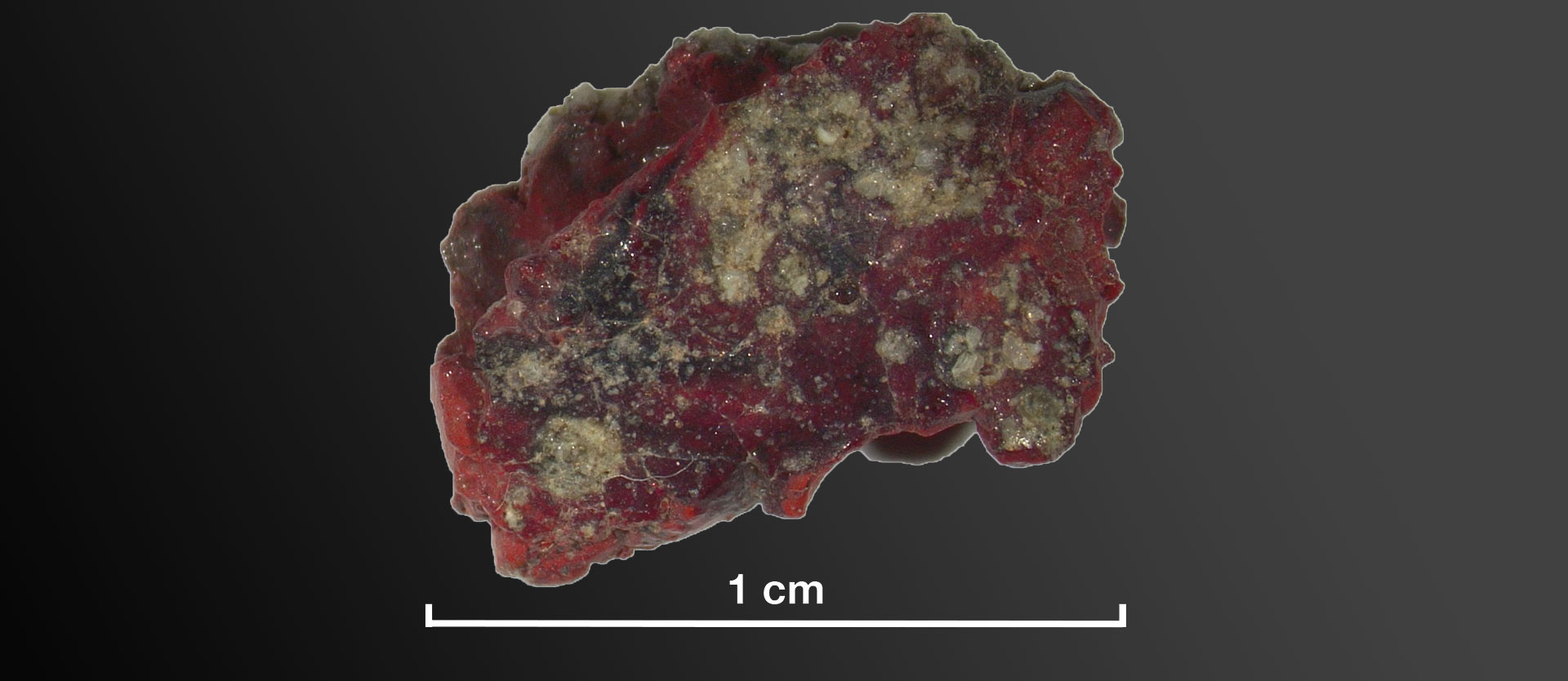
Birth in Hell

On 16 July 1945 at 5.30 pm, the earth was shaking in the desert of New Mexico. The USA had successfully detonated the first atomic bomb. The immediate surrounding was completely destroyed by the ensuing inferno. The tower on top of which the bomb was detonated was vaporized by the extreme heat. Within a radius of several hundred meters the sand melted. However, in the meantime astounding things took place in the sand. For the explosion, nowadays known as the Trinity-Test, not only destroyed, but also created a completely new material: trinitite, a greenish-coloured glass. It is likely to have formed when the hot sand was sucked from the ground into the fire ball, and then rained back from the sky and solidified again. Trinitite contains numerous radioactive isotopes, among which uranium-238.
Researchers from the university of Florence have now examined a red-brown piece of trinitite that was probably formed where the molten copper of a cable came into contact with the equally molten sand. The trinitite sample is only about ten micrometers large. Inside it, the researchers discovered an up until now unique quasicrystal.
In normal crystals, the atoms and molecules are arranged in a periodical pattern. This structure is repeated in every spatial direction, just as honeycombs are repeated in two spatial directions. In quasicrystals, on the other hand, they are not repeated. The pattern of the ordered atoms changes continuously. In nature, quasicrystals can be found in meteorites for example.
In the trinite sample under examination, the silicon, copper, calcium and iron form a pentamerous, trimerous, and dual symmetry. This makes the quasicrystal a unicum. In addition, it is the only quasicrystal consisting primarily of silicon and is furthermore the oldest manmade quasicrystal. In the laboratory, the first one was created in 1984.
Original publication:
Proceedings of the National Academy of Sciences, doi: 10.1073/pnas.2101350118
www.pnas.org/content/118/22/e2101350118












